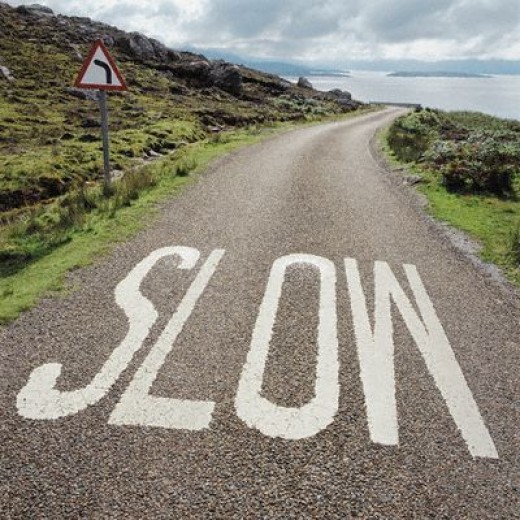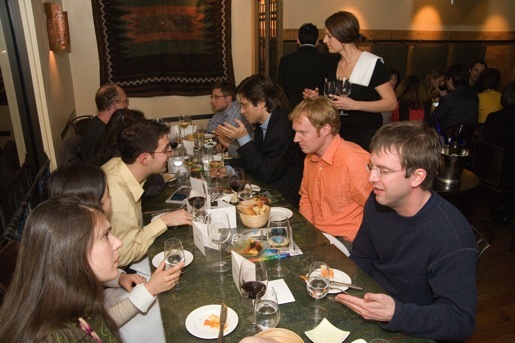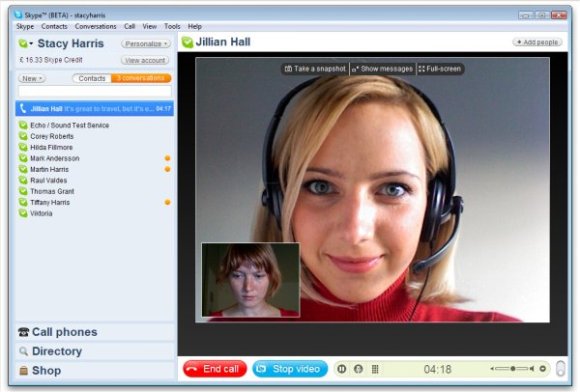Geraldine Barkworth wants you to do one simple thing, slow down. In our lives – constantly moving, constantly changing – it can be easy to forget to slow down and be at ease with ourselves.
Barkworth, a professional public speaking coach, has been using this outlook to help people improve their communication skills for more than a decade. The Goddess of Public Speaking, as she is known to her clients, believes that we practice public speaking every day and that speaking to an audience should be no different than having a conversation at the dinner table. Whether you are a CEO or an average Joe or Jane, Barkworth says the same skills apply for effective communication.
Located in Byron Bay, Australia, Barkworth has developed a range of alternative methods and tools to allow her clients to practice their public speaking with her from anywhere. Whether using her self-paced e-books, taking part in a session via phone or Skype, or attending a four-day workshop, Barkworth has designed her training to be delivered and doable by everyone, everywhere.
As we focus on this most common form of communication this month, Collaborative Services hears from Barkworth on her “polar opposite” approach to public speaking training, how men and women communicate differently, and how we can continue to practice our communication skills and maintain our confidence. We welcome her insights.
– – –
When did you first become interested in public speaking and why did you decide to pursue it as a career?
As a child, speaking in front of an audience came naturally; I just shrugged it on and off like a coat. I didn’t consider it a skill or a career option. I spent most of my life assuming that “real public speaking” was a formal, insincere, hyped-up performance and I wanted none of it. As Spock would say: “How illogical.” After six career changes I was retrained as a life coach and noticed that my clients were essentially looking for their authentic voice. I decided to focus my career on helping people overcome their fear of public speaking and become comfortable in their own skin, any time and anywhere, formally or informally. Imagine if we all felt genuinely at ease with ourselves… “Oh the places we could go!”
Many of your clients are what some might call average people: small business owners, yoga instructors, and case workers, not politicians and CEO’s who are usually associated with public speaking. How can the average person use public speaking skills in their daily lives?
Ah, that is exactly what I teach my clients! The same skills to effectively communicate from the platform are the same skills to be used at the dinner table. My definition of public speaking is: “Every time you have a conversation with anyone other than yourself, you are… public speaking.” If you change your mindset from assuming that public speaking is a formal speech in front of a huge judgmental crowd, and change it to public speaking is merely a conversation, being present with one human being at a time… it really takes the pressure off feeling self conscious and separate. The vast majority of my clients are professionals who need help to overcome their speaking fears to build their business and inspire change. They are there and they are making a difference, one conversation at a time.
Among the coaching and training services you offer there are some tailored specifically for women or available to women only.
I always recommend building a connection and rapport first and let the content follow. I think this appeals to women who often understand that you must open and give something of yourself first before you gain anything in return. I run an annual four day public speaking retreat just for women because I include dance classes, gourmet food and playing dress ups. I have found that men aren’t so keen on swanning around in a feather boa. It’s remarkable how being away from your everyday routine and simply trying on a different hat makes a difference in how you speak. Our beliefs come to dictate who we are, but beliefs and behaviours can be changed.
You also talk about how men and women communicate differently on your blog. How do men and women communicate differently and are there different skills and practices that can benefit women more when it comes to public speaking?
As you mention, in my blog article Do Men & Women Do Public Speaking Differently?” I offer a generalisation that I have observed in my clients: Generally, men compartmentalise into narrow specifics and thus need to use more descriptive language and join more dots. Women open many interconnected doors to a broad picture and thus need to to focus and hone. The ability to speak with presence however, crosses the gender borderline and we all get goosebumps whether the speaker is male or female.
What do you believe is the biggest misconception surrounding public speaking?
The biggest misconception is that you have to be more than what you are – as if ordinary ol’ you is not good enough. People freak out trying to be more formal, more cool, more perfect, more, more, more and yet, the biggest revelation my clients experience is that they just have to get out of their own way. It’s a major part of my job helping them to do just that. Less is more, actually!
Like any skill public speaking takes practice. What can people who have already worked to improve their public speaking do in order to maintain this skill and their confidence?
That’s the beauty of the down-to-earth blend I’ve created – you can practice your “public speaking” skills at a team meeting or at the dinner table. It’s simply learning to slow down, and genuinely and sensitively be with another human being. My public speaking techniques build emotional and social intelligence because in order to speak effectively to people, you have to be effective within yourself.
To gain practice in delivering a prepared presentation, I recommend you put your hand up and volunteer for speaking opportunities at work and in the community. I recommend connecting with people in every day situations as the number one fundamental speaking practice. If you can’t connect, no one will listen to your content, no matter how well it’s written. And if you are not comfortable with yourself, then no one else will be either. It can be useful to attend supportive public speaking and business networking clubs where you are welcome to practice and try out your ideas. I am often hired to constructively critique a workshop or speech (thank goodness for video) to help people improve their presentation skills or craft their core message – the key is to find an honest, objective expert with sensitive insight to help you grow and build confidence and skill.
You use new media with the services you offer including coaching sessions via Skype and Do-It-Yourself guided e-books. You also offer advice through your blog and on Facebook and on YouTube. Have you found that providing public speaking training via these alternative methods is just as affective as it is in person and if so why?
My approach to public speaking has been described as the “polar opposite ” to standard programs. I help people to speak from the inside out, which is where my professional coaching skills come in handy. I’ve designed alternative resources to working with me face-to-face, in order to reach a wider audience and meet different needs. Some people just want to dip their toe in the water while others are ready for full immersion and some simply can’t travel to Byron Bay, Australia! It’s surprising even to me how well my clients learn public speaking skill and confidence over the telephone. I guess that’s because when you give people space and permission to be themselves, they flourish naturally with strategic guidance and support behind them. And it’s easy for me to share the technical bits of message crafting, workshop facilitation and professional speaking in written or video form. Recently a business owner hired me just after watching one of my 3 Minute Video Tips because just watching and listening to me made her feel confident enough to do it herself. I have deliberately designed my delivery methods to be simple and do-able by everyone. It is your right to have the freedom to express yourself with natural ease – often that permission must first come from within.
You have been helping people master public speaking professionally for more than a decade. What have you learned over the past ten years and what are your goals for the future?
Mmm, if I was to distill my experience and intuition to one essential ingredient, this is it: slow down. It’s a motto for life, really, not just public speaking. It’s taken me 10 years to hone to that level of simplicity! Mind you, it’s probably taken me 10 years to accept that it is that simple. An editor recently said to me: “Oh that seems too simple – we can’t really use that” – and she chucked in some complex jargon to make my article sound more important. My continuing goal for the future is to help people find and retain their centre, to have the strength to stay true to their course and the flexibility to know when to adapt with wisdom. My public speaking method is really a personal growth program toward self actualisation and the bonus is you get to be terrific at this thing called “public speaking.” I would love to contribute to and live in a world with people at peace both inside and outside of themselves.
– – –
Thank you Geraldine for sharing your experience and findings with public speaking with us. We wish you the best of luck as you continue to help people learn to slow down, be comfortable in their own skin, and find success through public speaking.
Liz Faris, Associate
Collaborative Services, Inc.








Recent Comments